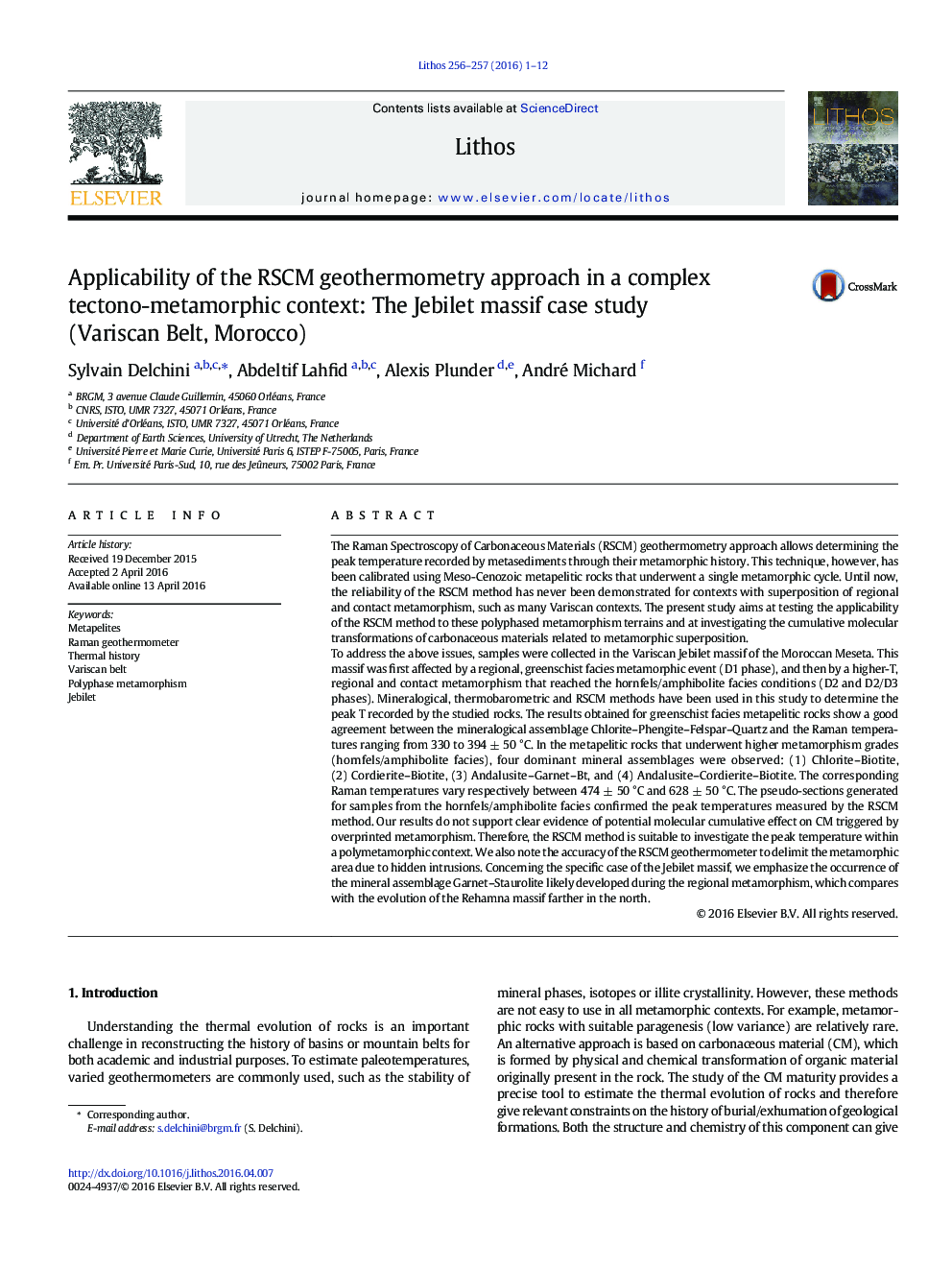| کد مقاله | کد نشریه | سال انتشار | مقاله انگلیسی | نسخه تمام متن |
|---|---|---|---|---|
| 4715484 | 1638646 | 2016 | 12 صفحه PDF | دانلود رایگان |

• We examine the applicability of the RSCM in polymetamorphic contexts.
• We use rocks of different metamorphism grade to compare mineralogical and RSCM data.
• No clear molecular cumulative effect on CM structure, evolved under regional and contact metamorphisms, was observed.
• The new geodynamic interpretation of Grt–St assemblage shows that the metamorphism of the Jebilet massif needs more studies.
The Raman Spectroscopy of Carbonaceous Materials (RSCM) geothermometry approach allows determining the peak temperature recorded by metasediments through their metamorphic history. This technique, however, has been calibrated using Meso-Cenozoic metapelitic rocks that underwent a single metamorphic cycle. Until now, the reliability of the RSCM method has never been demonstrated for contexts with superposition of regional and contact metamorphism, such as many Variscan contexts. The present study aims at testing the applicability of the RSCM method to these polyphased metamorphism terrains and at investigating the cumulative molecular transformations of carbonaceous materials related to metamorphic superposition.To address the above issues, samples were collected in the Variscan Jebilet massif of the Moroccan Meseta. This massif was first affected by a regional, greenschist facies metamorphic event (D1 phase), and then by a higher-T, regional and contact metamorphism that reached the hornfels/amphibolite facies conditions (D2 and D2/D3 phases). Mineralogical, thermobarometric and RSCM methods have been used in this study to determine the peak T recorded by the studied rocks. The results obtained for greenschist facies metapelitic rocks show a good agreement between the mineralogical assemblage Chlorite–Phengite–Felspar–Quartz and the Raman temperatures ranging from 330 to 394 ± 50 °C. In the metapelitic rocks that underwent higher metamorphism grades (hornfels/amphibolite facies), four dominant mineral assemblages were observed: (1) Chlorite–Biotite, (2) Cordierite–Biotite, (3) Andalusite–Garnet–Bt, and (4) Andalusite–Cordierite–Biotite. The corresponding Raman temperatures vary respectively between 474 ± 50 °C and 628 ± 50 °C. The pseudo-sections generated for samples from the hornfels/amphibolite facies confirmed the peak temperatures measured by the RSCM method. Our results do not support clear evidence of potential molecular cumulative effect on CM triggered by overprinted metamorphism. Therefore, the RSCM method is suitable to investigate the peak temperature within a polymetamorphic context. We also note the accuracy of the RSCM geothermometer to delimit the metamorphic area due to hidden intrusions. Concerning the specific case of the Jebilet massif, we emphasize the occurrence of the mineral assemblage Garnet–Staurolite likely developed during the regional metamorphism, which compares with the evolution of the Rehamna massif farther in the north.
Journal: Lithos - Volumes 256–257, July 2016, Pages 1–12